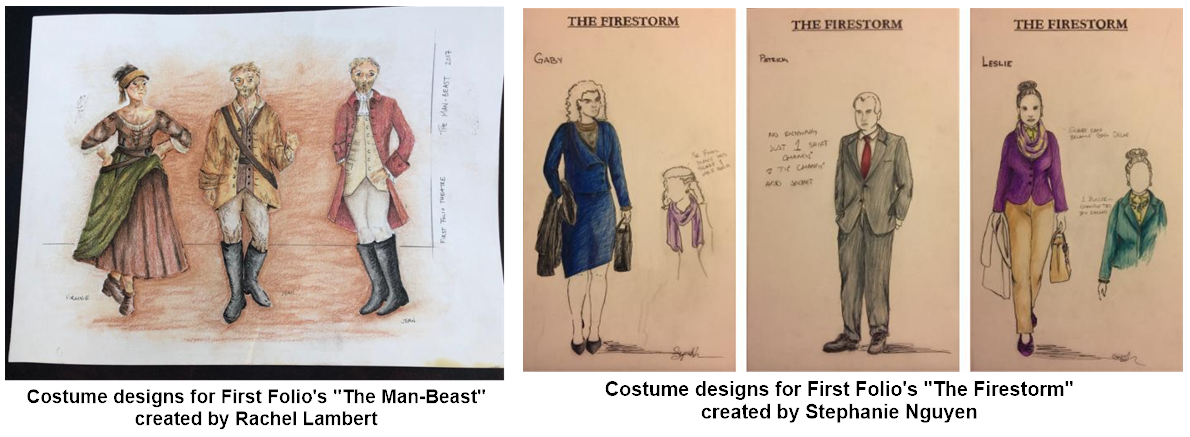
- Greek playwright Aeschylus (525-456 BC), is credited with establishing the traditional costume for Greek tragedy. It consisted of a long, patterned tunic, a stylized mask to distinguish the character, and high-soled shoes called corthunae. All of these garments were exclusively for theatrical use, not everyday wear.*
- During the Renaissance, both scenery and costume came to be even more important than the text. The nobility staged lavish court pageants to entertain their guests. Costumes depicted gods, animals, and mythological creatures, as well as emotions like hope and joy. Designers for these festivities included Leonardo da Vinci and Inigo Jones.*

- Commedia dell'arte (meaning "comedy of the profession") became popular in Italy during the 16th century. Commedia actors wore masks and costumes that signified stock characters, such as Pantaloon, who dressed in the wide trousers that bear his name. The servant Brighella had a coat of horizontal green stripes, the forerunner of 19th-century British livery. Other comic characters include Harlequin, who was characterized by his checkered costume, and Il Dottore, an elderly erudite always dressed in black. *
- Costumes for Shakespeare's plays were a mixture of various periods that audiences accepted as the standard convention. Most parts were performed in contemporary dress either owned by the actor or provided by the theater's patron. On occasion, a helmet or breastplate might indicate a soldier. Fairies and nymphs might wear classical draperies.*
- In Japanese Noh theater, costumes are called noh shōzoku. One example is the karaori, an embroidered, traditional woman’s kimono. Karaori means “Chinese-style fabric” as it is said to be modeled after the Chinese Shokko brocade of the Ming period. By using stylized and symbolic costumes, Noh costume designs not only portray a character's social status but they also express a character's feelings.**
- In Yakshagana, a traditional eastern Indian theater form, costumes (called vesha) are very rich in colors. Ornaments are made out of light wood, pieces of mirror, and colored stones. Yakshagana costumes consist of headgear for both male and female characters (Kirita or Pagade), armor on the chest (Kavacha), armlets on the shoulders (Buja Keerthi), and belts (Dabu), all made of light wood and covered with golden foil. ***
*Information from "Theatrical Costume" by Whitney Blausen
**Information from "Introducing the World of Noh" from the-noh.com
***Information from "Yakshagana" on Wikipedia.
![]()
